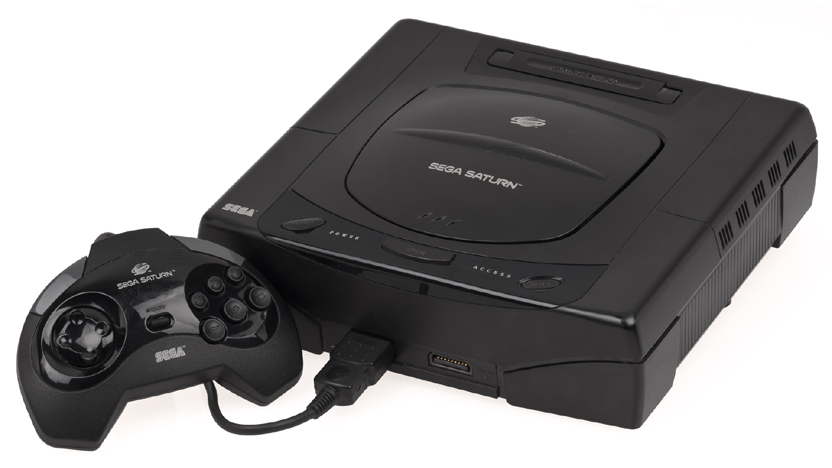The Sega Saturn was an important chapter in the history of game consoles, mostly for not doing much of anything right. Though it was a technically sound piece of hardware that theoretically should (and could) have gone toe to toe with Sony's disruptive PlayStation, a series of monumental errors on the part of Sega caused the Saturn to wither and die a tragic and somewhat untimely death at retail. Since that time, it has been all but forgotten by the majority of gaming culture but it's worth remembering for the lessons that can be learned from its various associated blunders, as well as for the few things the console did have going for it.
Sega's failures with the Saturn were manifold and they arguably began before the system was even conceived of. In the early part of the '90s, in order to compete with NEC's recently released TurboGrafx CD (as well as Nintendo's rumored upcoming Super Nintendo CD add-on (which is what essentially went on to become the PlayStation) Sega decided to develop and release their own CD drive for their popular Genesis console. Later, Sega would also release an additional, more powerful, cartridge-based add-on for the Genesis - the 32X. Both of these peripherals were largely over-priced failures that mainly served to fragment and frustrate Sega's previously growing fan base.
Despite the fact that backwards compatibility has never been much of an industry standard, the lack of it in the Saturn's case certainly didn't win it any supporters. Sega's newest console included a CD drive and a cartridge slot, yet could play neither Sega CD discs, nor any of the two previous generations worth of Master System, Genesis, or 32X cartridges. Adding insult to injury, the Saturn was announced at a price point of $399, $100 more than Sony's PlayStation. Many fans balked at the prospect of having to pay more for Sega's hardware, after having already shelled out for supefluous add-ons and media that were no longer being supported.
Finally, Sega had initially indicated that the Saturn would launch on Satur[n]day, September 2nd, 1995. However, they decided to be clever and try to get a jump on the competition. At the (very first) Electronic Entertainment Expo on May 11th of that year, they surprised everyone by announcing that it was already available, that very day, at select stores. Unfortunately, the plan backfired. Key retailers that were not let in on the surprise were more than a little upset with Sega. One store chain even responded by dropping Sega's wares altogether. To make matters worse, most of the launch games were still scheduled for release in September, leaving the Saturn with few titles to choose from during the first several months of its life. By the time the PlayStation was released, not a great deal of gamers had opted to pick up a Saturn and Sony's console quickly and easily surpassed the sales of Sega's offering.
Sega may have inadvertently sealed the Saturn's fate before (and even on) the date it came out, but that doesn't mean the console was totally worthless. To the Sega loyalists who were still willing to buy one when it launched, or the more cost-conscious fans who waited for the price reductions that followed soon after, the Saturn was still the best place to play fantastic new titles that could only be found in the arcades (if anywhere else). The games are the biggest reason why, despite all of its numerous failings, the Saturn is still viewed with a modicum of respect, and a good bit of nostalgia in certain circles. So, as a way to honor it on its 24th birthday today, we would like to present you with 12 such examples of the Sega Saturn's said sole saving grace.

